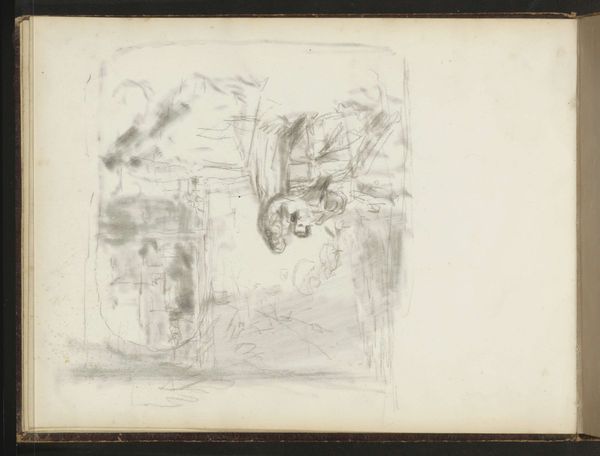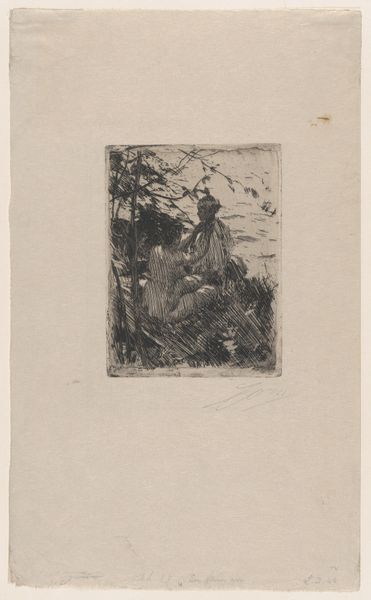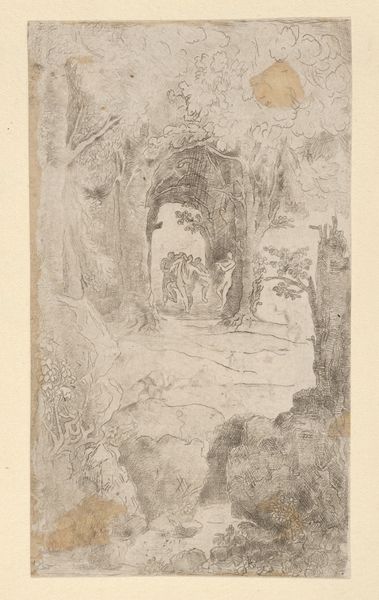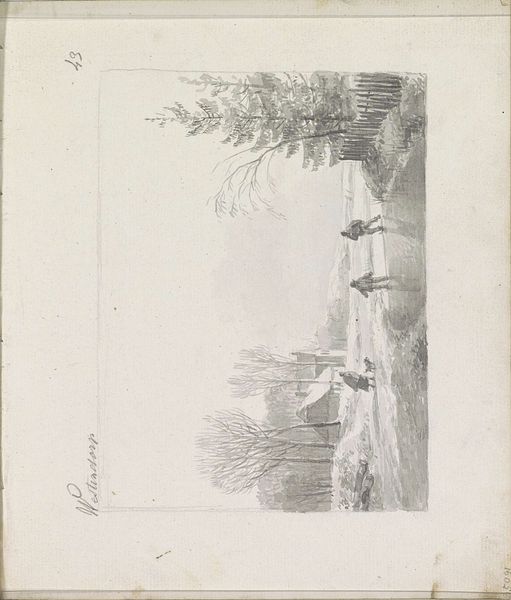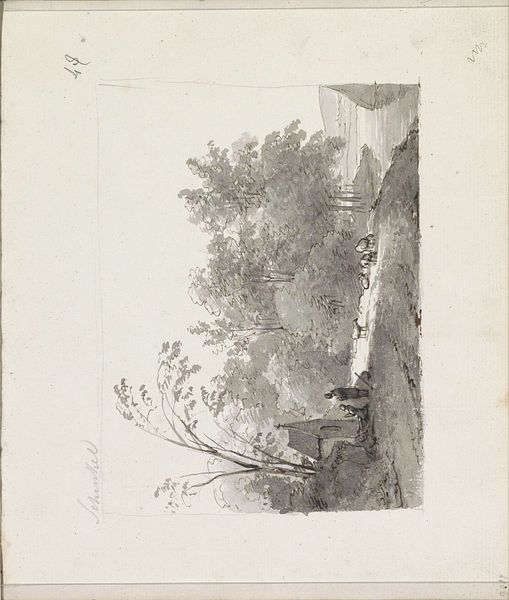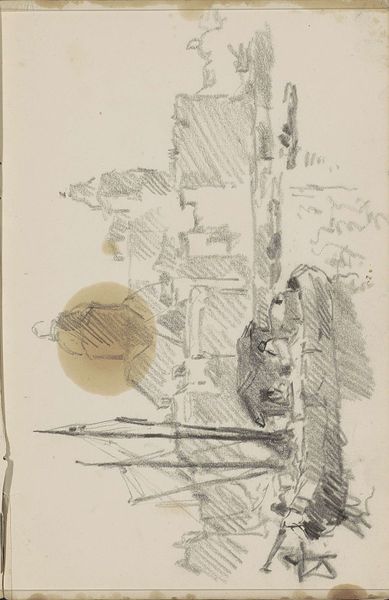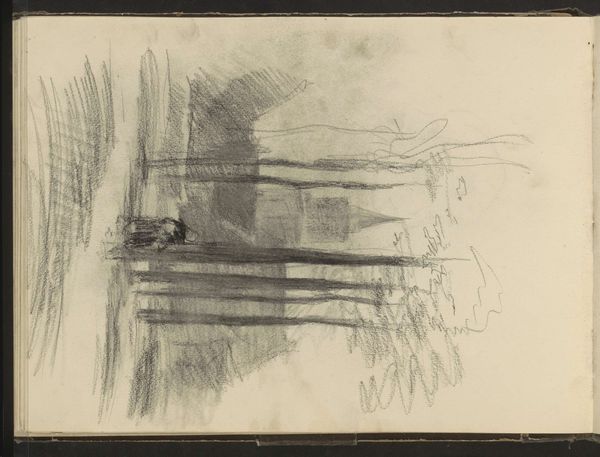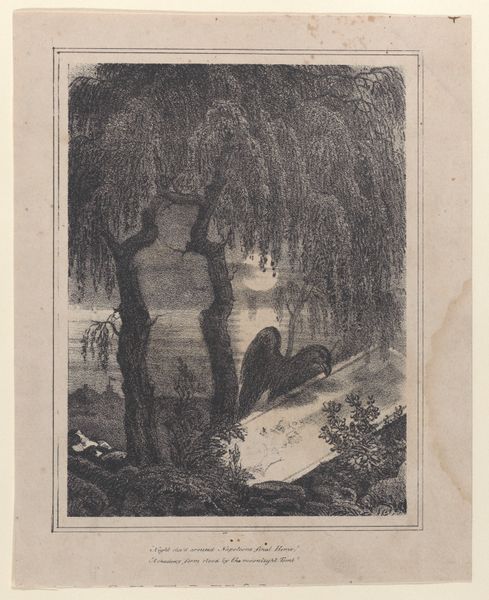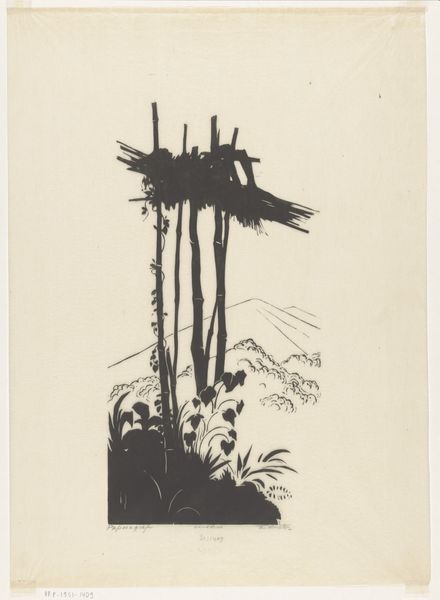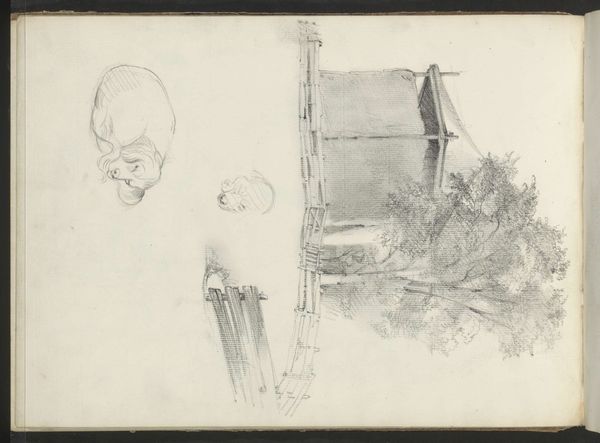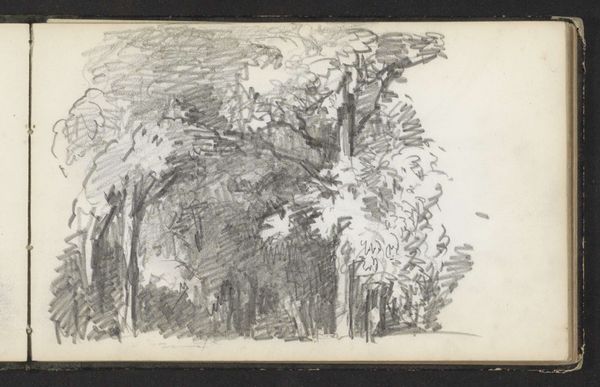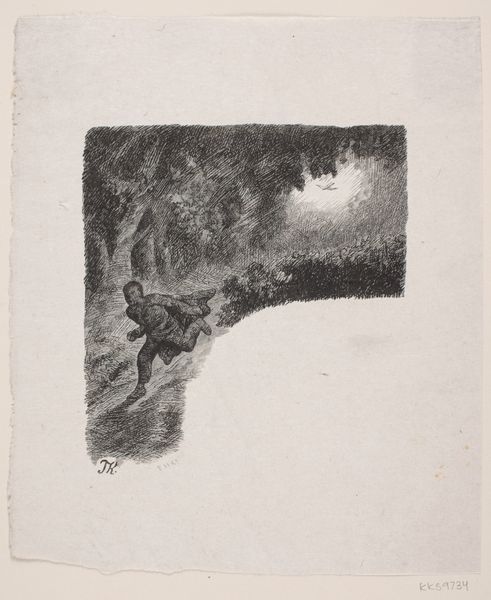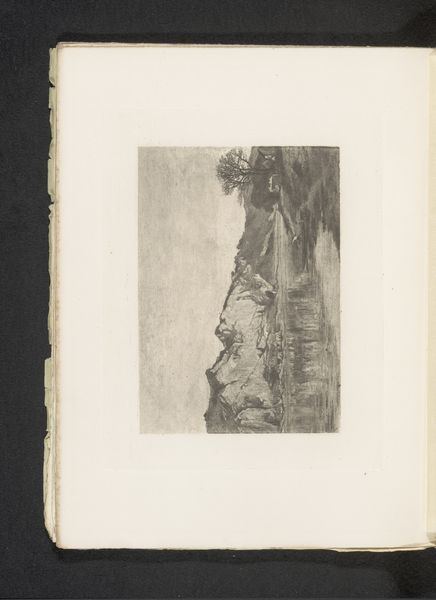
drawing, pencil, charcoal
#
drawing
#
landscape
#
charcoal drawing
#
figuration
#
pencil
#
charcoal
Dimensions: sight size: 28 x 19.2 cm (11 x 7 9/16 in.)
Copyright: National Gallery of Art: CC0 1.0
Curator: Here we have Malcolm Rice's "Ebenezer Quarry - The Snake and the Ram," executed in charcoal and pencil in 1944. Editor: There's an undeniable austerity to this work; a kind of desolate stillness. The severe lines forming the quarry’s architecture dominate, leaving very little sky visible. Curator: Indeed. Observe how Rice frames the composition, almost architecturally, directing our gaze into the abyss. The limited tonal range intensifies the structural interplay of light and shadow. The foreground offers a textured contrast, drawing a clear distinction between elements. Editor: And that’s where my mind begins to wander towards the materiality, right? To create this piece, Rice harnesses readily available and, dare I say, inexpensive media: paper, pencil, charcoal. It speaks of practicality, of making art accessible even amidst, perhaps, social constraints. Curator: I concede your point regarding its economic implications. However, such simplicity doesn't detract from the drawing's semiotic richness. Consider the snake and the ram alluded to in the title, subtly integrated into the composition, acting as potent symbolic counterpoints. Editor: Symbols of vulnerability versus power, sure. The snake motif coiled amidst the reeds, for instance, gives agency and intentionality to what is represented here. It evokes themes of predation and hidden energies embedded within these landscapes exploited by industrial quarrying processes. Curator: It’s more than mere predation; it is also about underlying universal forces. It seems the composition intentionally sets up binaries for us to consider – nature and artifice, presence and absence, to guide interpretation. Editor: The contrast between organic reeds and carved stone certainly tells that tale. And what of Ebenezer Quarry? Is there something here to learn from this exploitation in relation to work or labor history embedded into the landscape. This intersectionality brings layers of social meaning into Rice’s work. Curator: I see what you're proposing, that art has political power. For me, the enduring power of this piece rests within the harmonious juxtaposition of forms and the interplay between darkness and light. Editor: Absolutely, each element interacts to evoke narrative; what's revealed or concealed here speaks volumes!
Comments
No comments
Be the first to comment and join the conversation on the ultimate creative platform.
